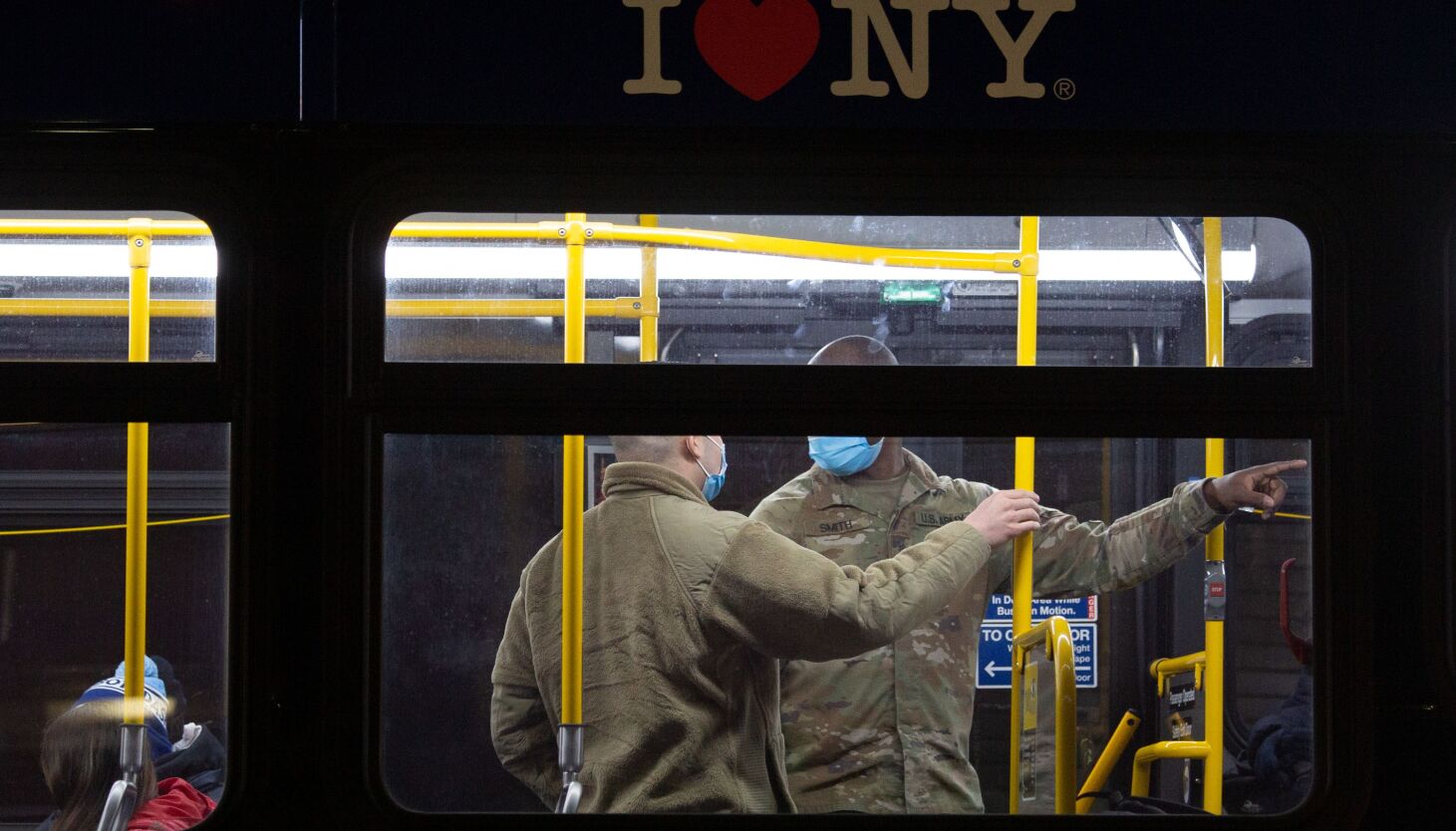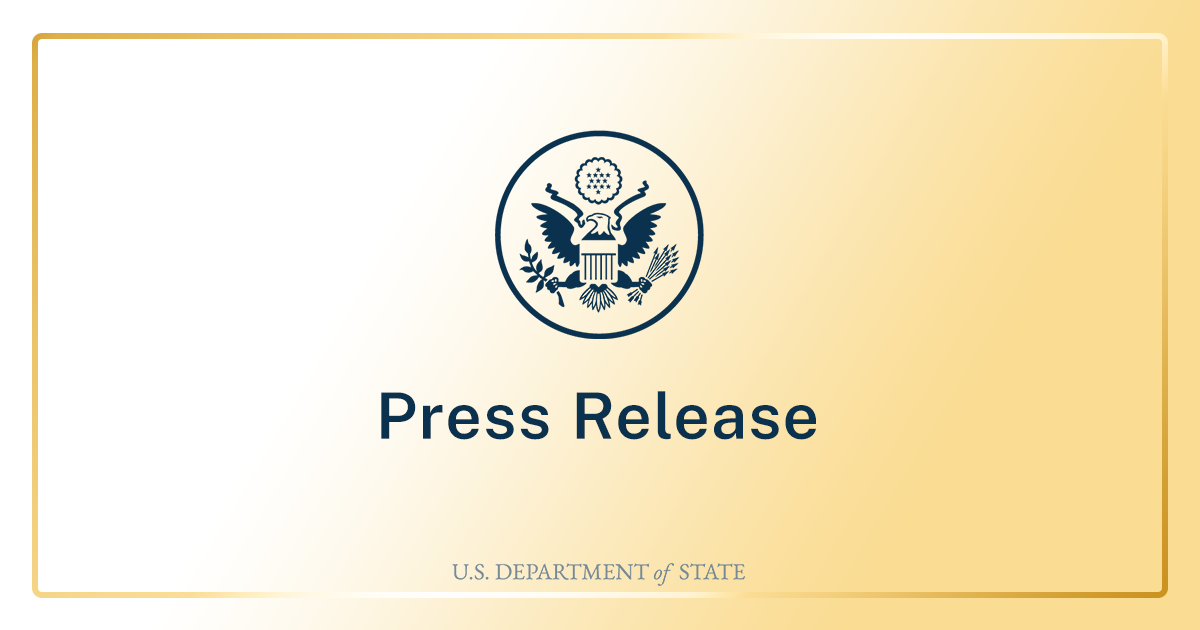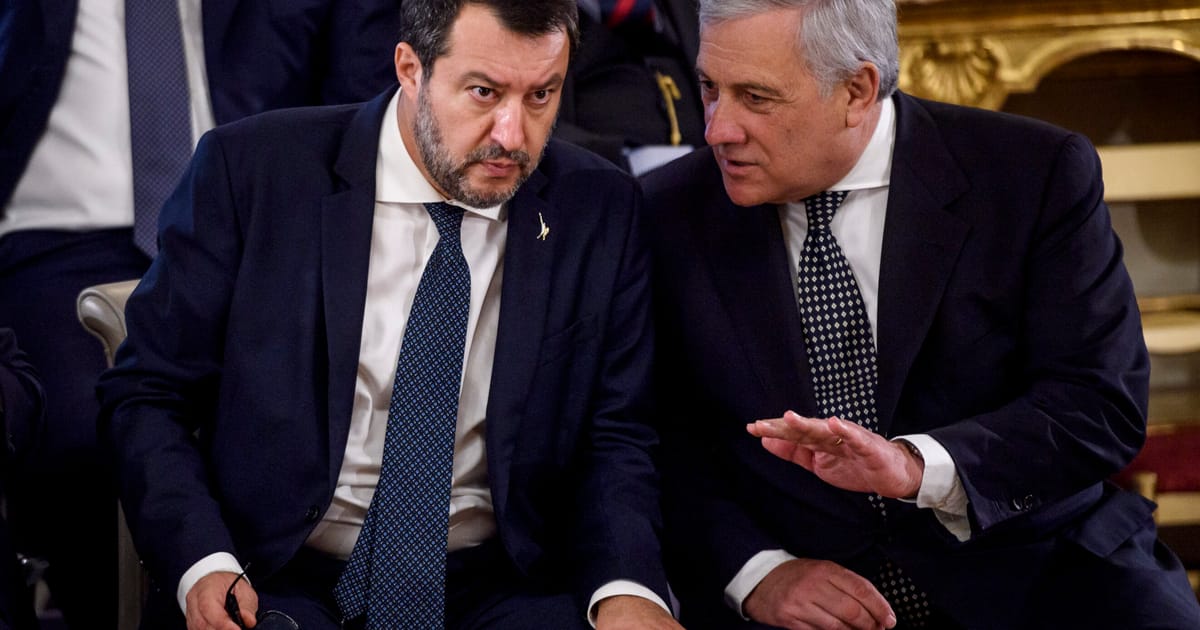Buses bringing asylum-seekers from the Mexico border are beginning to arrive in increased numbers at the Port Authority Bus Terminal, as city officials brace for the potential end of a federal policy that prevented many migrants from entering the country.
The makeshift, barricaded welcome area for migrants there has been a constant since the first buses made their way to NYC in the summer.
But now, National Guard members are taking the lead in the government response. Volunteer groups are also present, providing new arrivals with food, clothes and other necessities before they are sent in MTA buses to the city’s intake canters.
Ilze Thielmann, director of the aid group Team TLC, was at the scene Monday, much as she has been since asylum seekers started coming to the city in large numbers in late spring. She said four buses had arrived on Monday alone — two from El Paso and two from Del Rio — an uptick after things had slowed down to one to three buses a week.
“In anticipation of that happening, people have been amassing at the border even more than usual,” Thielmann said of the end of the policy, known as Title 42, that had been expected to expire Wednesday before Supreme Court Justice John Roberts stayed that deadline on Monday.
A Trump-era order, Title 42 used an existing public health emergency measure during the pandemic to require people seeking asylum to do so from outside of the United States.
“Some of them just have not been able to wait. So they’ve crossed,” Thielmann told THE CITY. “When Title 42 is ultimately lifted, the floodgates are just gonna open.”
The new wave comes as NBC New York reported on Monday that a 26-year-old male asylum seeker had died by suicide inside a Queens shelter last Wednesday. In September, a mother of two also took her own life in a Queens shelter.
On Monday, the National Guard directed much of the operation that greets arrivals after their arduous journeys—a fairly new development, according to volunteers who have worked since the summer to help settle thousands of new arrivals, many from Venezuela. A spokesperson for the National Guard said the mission came at the behest of Gov. Kathy Hochul. Hochul’s office did not immediately respond to a request for comment.
Prior to October, the Office of Immigrant Affairs and other city agencies had been in charge of processing new arrivals — with more than 31,800 ending up in city homeless shelters, where nearly 21,700 remain.
Volunteers, who since late spring have made sure new arrivals are supplied and sheltered, say they have received no official communication from the city about what to do if Title 42 is ultimately ended.
Thielmann said that she’s concerned about what’ll happen next.
“I am just shocked that we are about to have Title 42 lifted, and I have seen there’s been no coordination with the NGOs,” Thielmann said. “I just don’t know what to expect, other than chaos. But the volunteers will just keep doing everything we can to help these folks. And, and just keep praying that the city, the state and the federal government step up and come up with a plan.”
A memo from the Mayor’s Office to City Council members on Sunday projected that 10 to 15 buses could arrive in the next two days, with many following if Title 42 is ultimately lifted. A federal judge had ruled that the “arbitrary and capricious” policy had to end by this Wednesday, but Justice Roberts’ stay, in response to a request filed by 19 Republican-led states, temporarily maintains it.
For months, Mayor Eric Adams has pleaded for federal funds and other assistance to help New York City — where a shelter for every person in need of housing is a unique legal right — accommodate migrants seeking asylum. So far, the city has opened 60 emergency shelters and four Humanitarian Emergency Relief and Recovery Centers where new arrivals get assistance.
The mayor’s Office of Emergency Management set up a tent camp to receive new arrivals, first erecting one at Orchard Beach that was never used and then opening one on Randalls Island in October, only to shut it down in November after President Joe Biden and the Mexican government reached an agreement that forced many Venezuelans seeking to reach the United State to stay in Mexico and apply for asylum from there.
“That’s why I keep going back to, this is a border issue. And this is a national problem that we have to resolve,” Adams said to THE CITY in an interview Monday morning.
‘We Need More Help’
Adams said that his administration will send adults who arrive without children to group homeless shelters.
He also stressed that while New York City is doing more than any municipality to welcome and house immigrants, it is at a breaking point. In mid-November, the city Independent Budget Office estimated that the city would spend $596 million for one year’s worth of services, based on the number of people who had arrived by then.
“There is no humane response that’s comparable to what we’re doing in the city,” the mayor said. “But this is coming at the expense of taxpayer dollars. And I’m not going to deny New Yorkers their basic needs, and continue to erode their services. I still have services to provide to the taxpayers of the city. And I’m going to do that. And, you know, we’re going to do it in a humane way.”
At a City Council oversight hearing Monday on the city’s services to migrants, Council members pressed high-ranking officials representing a swath of city agencies, including the Office of Emergency Management, New York City Health and Hospitals, the Mayor’s Office of Immigrant Affairs and the Department of Social Services.
The officials in turn called for federal and state dollars to help provide support for the expected arrival of migrants.
“We need federal help. We need more help from the state. The city cannot do this by itself,” Zach Iscol, commissioner of the Office of Emergency Management, told lawmakers.
As far as options to house potentially tens of thousands of new migrants, Iscol said that “everything is on the table,” including potentially reopening the Randall’s Island tenant encampment, which his agency has already dismantled.
“It was remarkable, that operation,” he said, adding: “There was not a need for it at that time because the buses stopped coming.”
Pressed by Brooklyn Councilmember Shahana Hanif, Iscol conceded the tent site could make a return.
“Yes, we’re considering it,” he said.
Some Council members raised concerns about mounting costs tied to the city’s right to shelter.
“We cannot continue in this vein unless we get money from the city, from the state and our federal government,” said Joann Ariola (R-Queens). “The city is going to go belly up trying to provide for people that we care about and nobody else does.”
On Sunday, a leading immigration advocate said he wasn’t surprised the city was struggling to meet the needs of the asylum seekers.
“The city hasn’t gotten funding from the feds and that’s what they’re asking for,” said Murad Awawdeh, executive director of the New York Immigration Coalition.
“We are kind of constantly in this circular conversation for the past six months,” he said. “And the federal government isn’t stepping in to coordinate.”
As some recently arrived migrants waited Monday within the cordoned-off area of Port Authority, other migrants who’d arrived earlier in the year would trickle in asking for help. It’s a scene that volunteers say they’ve seen before.
Husband and wife Yeison Vasquez and Dirley Zambrano, from Venezuela, had been in the city for several weeks, staying at the Row Hotel. They went back to Port Authority with about a dozen bags after they were told by staff late last night that Vasquez had been removed from the hotel’s system and was no longer allowed to stay there.
“Practically, we’re in a situation of being out in the streets with our girl,” Zambrano said in Spanish. Vasquez added: “She’s a girl of 6 years.”
We soon have to pick her up from school and she’s not going to a home, she’s going to a terminal,” Zambrano said.




